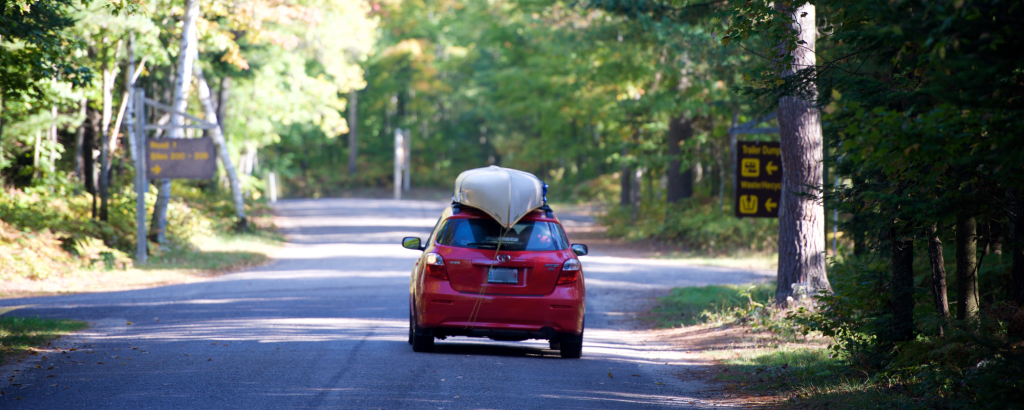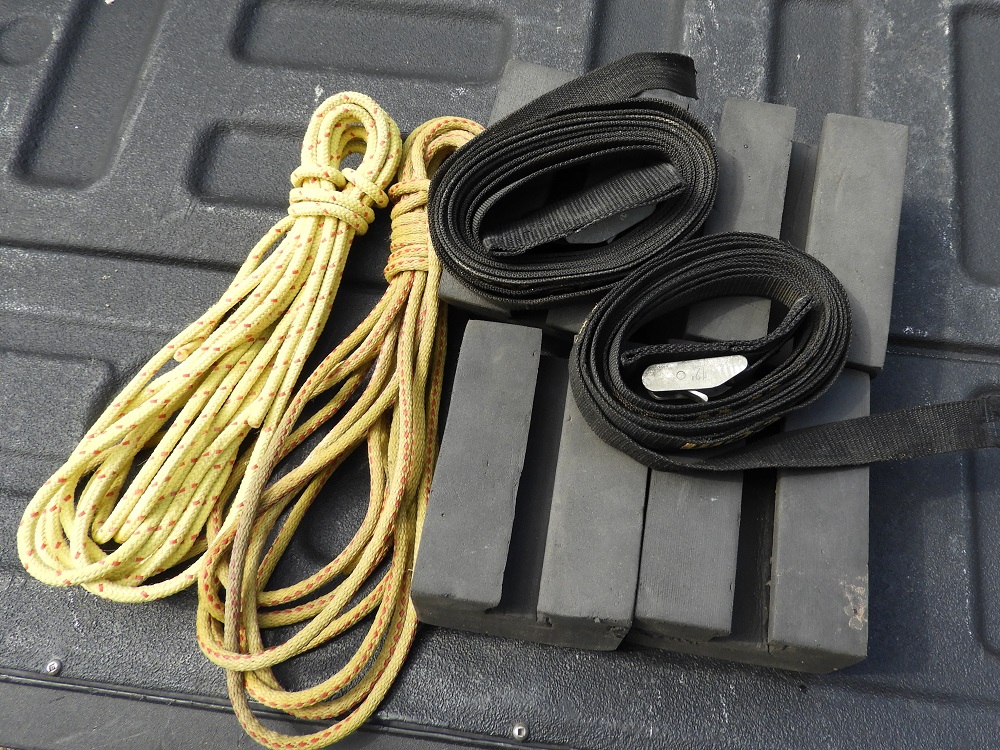
Preparing for a paddling adventure?
Tying your canoe to your vehicle is an important step in safely making it to the canoe launch. There are a few different options, depending on if you have racks on your vehicle or not.
Either way, you’ll need a secure setup that is not susceptible to wind gusts, highway speeds, or bumpy backcountry access roads.
~
Here are our top tips:
1. Balance your canoe

Find the spot where your canoe does not tip side to side or front to back.
On a vehicle, this often means the yoke is resting equally between the crossbars.
~
2. Choose the right straps

The once popular bungy cord method is no longer accepted as safe.
Too many accidents occurred where the canoes came loose during sudden stops or twisted in the wind.
Instead, we recommend getting cam straps or using non-elastic rope and tying a truck’s hitch knot to secure it.
~
3. Tie bow and stern lines
We’ve seen many campers only use hull straps and forego bow and stern lines.
This is a mistake on vehicles, where contact points with the roof or racks are close together. It makes the canoe tippy and vulnerable to twisting or flying off.

Many vehicles have attachment points under their front and back bumpers.
You can also consider purchasing tie-down loops for your vehicle’s hood and trunk to avoid scratching its paint. These lines need to be snug but not ratchet-tight.
~
4. Know how to handle two canoes
If your racks are wide enough to accommodate two canoes, be sure to secure them separately.

This means using four straps (two for each canoe).
~
5. Tie down your canoe right away
It happens every season: someone places their canoe on their vehicle, gets distracted by one last group photo or a bite to eat, and then drives off with their canoe unsecured.

Don’t end a great trip with a damaging bang!
~
6. Check your straps
After ten minutes of driving, pause and check your straps for any loosening, particularly if you are driving in the rain. Wet rope and webbing can stretch.
Adjust as needed.

Carrying extra rope on any canoe trip is a good idea. Be sure to have it accessible in case it’s needed.
~
7. Practice at home
Your travel days will be much more relaxed and enjoyable if you’re familiar with and feel confident in your tie-down setup.
Practice at home so you can spend more time on the water and less in the parking lot.
~
We hope you have an amazing and safe paddling season!
Bon voyage!


